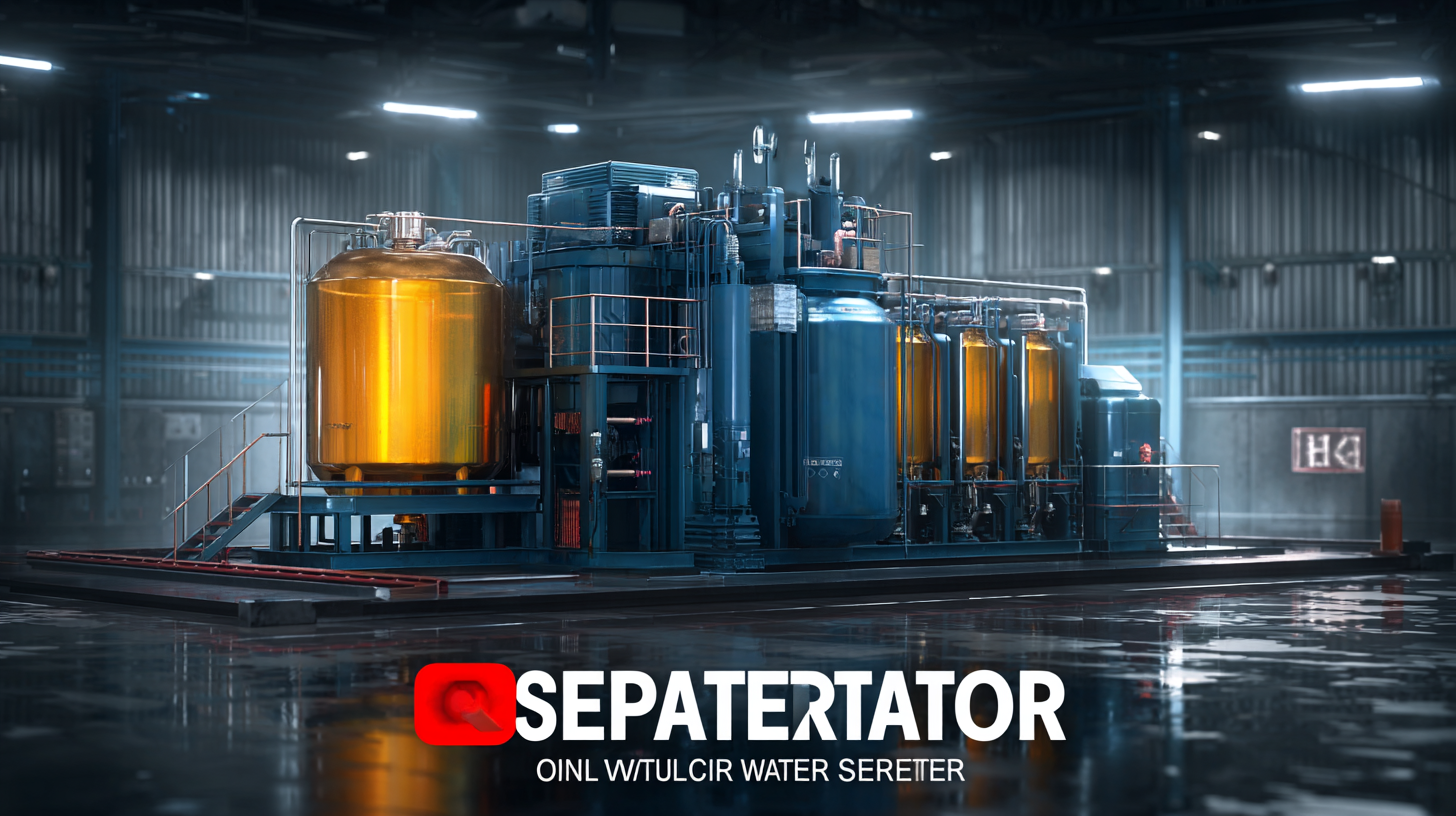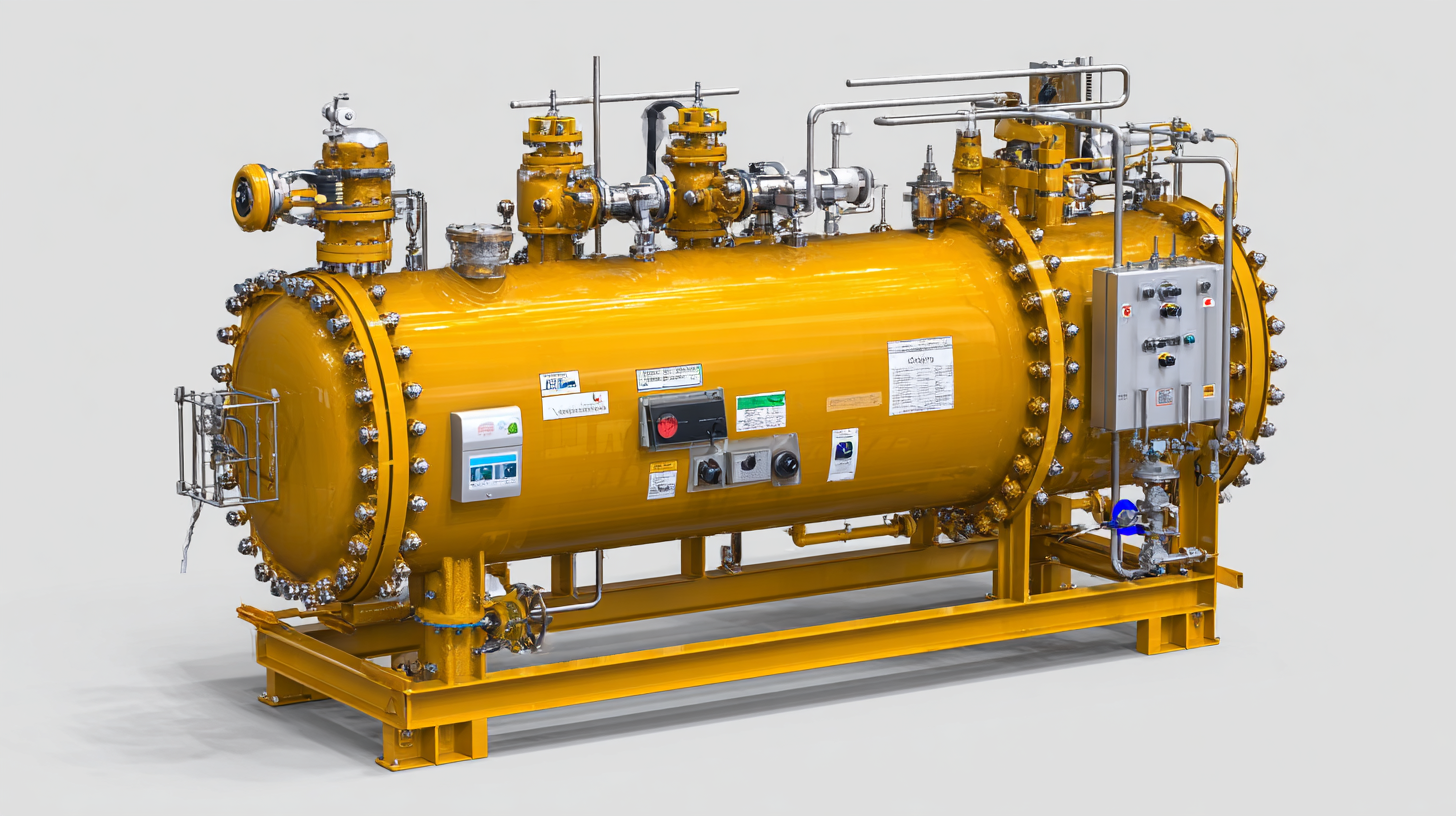
- sales@bjbod.com
- Mon - Sat at 7:00AM to 9:00PM

As industries continue to face the dual challenge of maintaining operational efficiency while adhering to stricter environmental regulations, the significance of innovative solutions becomes increasingly paramount. One critical component in this landscape is the Industrial Oil Water Separator, a device essential for treating wastewater contaminated with oil and water. According to recent reports from the Environmental Protection Agency (EPA), improper wastewater management can lead to significant environmental damage, costing industries millions in fines and remediation efforts. Moreover, the global market for oil-water separation technologies is projected to reach $18 billion by 2025, with a compound annual growth rate (CAGR) of 4.6% (Market Research Future). This blog will explore cutting-edge alternatives to traditional Industrial Oil Water Separators that promise enhanced efficiency, spotlighting trends that are set to define technology development in 2025 and beyond, while also providing practical guidance on implementation.

 Understanding the mechanisms of modern oil water separators is essential for enhancing efficiency in industrial settings. These separators play a crucial role in mitigating environmental impact by efficiently removing oil contaminants from wastewater. The modern designs integrate advanced technologies, such as coalescing filters and gravity separation, to optimize the separation process. Coalescing filters capitalize on the natural tendency of smaller oil droplets to merge into larger ones, thus accelerating their rise to the surface for easy removal.
Understanding the mechanisms of modern oil water separators is essential for enhancing efficiency in industrial settings. These separators play a crucial role in mitigating environmental impact by efficiently removing oil contaminants from wastewater. The modern designs integrate advanced technologies, such as coalescing filters and gravity separation, to optimize the separation process. Coalescing filters capitalize on the natural tendency of smaller oil droplets to merge into larger ones, thus accelerating their rise to the surface for easy removal.
Moreover, the introduction of automated control systems has revolutionized the operation of these separators. By utilizing sensors and real-time monitoring, industries can maintain optimal separation conditions, adjusting parameters as needed to respond to varying water compositions. This level of automation not only improves separation efficiency but also reduces operational costs and downtime, allowing for a more sustainable and streamlined industrial process. As industries seek innovative alternatives to traditional oil water separators, understanding these mechanisms is crucial for selecting the right technology that aligns with specific operational needs and environmental regulations.
When selecting an oil water separator for your operation, it is crucial to consider several key features that can significantly enhance efficiency. One essential factor is the separator's treatment capacity; according to a report by the Environmental Protection Agency (EPA), effective systems can achieve oil removal rates as high as 99%. This level of performance is vital, especially in industries such as oil refining and wastewater treatment, where regulatory compliance and environmental stewardship are paramount.
Another important aspect is the technology employed by the separator. Advanced systems utilizing coalescing filters or membrane technology can offer superior separation capabilities. For instance, the latest studies show that coalescing separators can reduce oil concentrations to below 10 mg/L, well within the limits set by the Clean Water Act. Additionally, energy consumption is a significant factor; energy-efficient models can reduce operational costs by 30-40%, making them a sustainable choice for long-term operations. By focusing on these key features—treatment capacity, advanced technology, and energy efficiency—you can ensure that your chosen oil water separator meets both regulatory standards and operational goals.
Innovative technologies are transforming oil-water separation processes, making them more efficient and environmentally friendly. Recent advancements have introduced novel methods for enhancing separation efficiency, such as polyethyleneimine-enhanced silicon carbide membranes. These membranes demonstrate exceptional performance in high-temperature condensate environments, showcasing a significant leap in the ability to tackle complex separation challenges. Their unique properties not only improve oil recovery but also contribute to environmental sustainability by minimizing wastewater pollution.
Moreover, researchers have recently developed a new membrane-based technology, known as the Janus Channel of Membranes, that achieves an impressive 97% oil separation with 99.9% purity. This breakthrough paves the way for more effective industrial oil-water separators, reducing reliance on traditional methods which may contribute to ecological harm. Further advancements include biomimetic microfluidic pumps that utilize spring microchannels for selective oil-water separation, emphasizing the industry's shift toward innovative, sustainable options. As these technologies evolve, they promise to revolutionize the oil-water separation landscape, aiding in the prevention of oil spills and the protection of our vital water resources.
When evaluating oil water separation solutions, a comparative analysis between traditional methodologies and innovative alternatives reveals significant differences in efficiency and environmental impact. Traditional oil water separators, often utilizing gravity separation techniques, typically achieve a separation efficiency of around 90%. However, this method may fall short when processing emulsified oils or fine particles, leading to compliance challenges with discharge regulations. According to the International Oil and Gas Industry Environmental Code, over 15% of waste generated from oil industry operations is attributable to insufficient oil water separation, highlighting the need for better solutions.
In contrast, emerging technologies such as membrane filtration and bio-based separation systems offer enhanced performance, achieving separation efficiencies that can exceed 99%. For instance, recent reports from the Water Environment Federation indicate that membrane systems can handle a wider range of contaminant sizes, providing an effective solution for complex waste streams. Furthermore, innovative approaches like electrocoagulation leverage electrical charges to destabilize emulsified oils, facilitating faster and more efficient separation, thus reducing both operational costs and environmental footprint. As industries evaluate their waste management strategies, the transition from traditional to alternative oil water separation solutions promises not only improved efficiency but also more sustainable practices in line with global environmental goals.
Maximizing the efficiency of oil water separators in industrial settings is crucial for maintaining environmental compliance and operational effectiveness. To achieve optimal performance, regular maintenance is key. Establishing a routine inspection schedule allows for the early detection of clogs or mechanical issues that can hinder the separator's functionality. This includes checking the coalescing media, which plays a vital role in separating oil from water. Replacing worn-out components promptly ensures that the separator operates at its best, preventing costly downtime and enhancing overall efficiency.

Another best practice involves monitoring the flow rates and adjusting them to match the separator's design specifications. Overloading the separator can lead to ineffective separation and increased oil carryover. Operators should also invest in training staff on the operational parameters and the importance of maintaining the proper equipment settings. Moreover, integrating advanced technologies such as real-time monitoring systems can provide valuable data on performance metrics, allowing for timely interventions when necessary. By adopting these practices, industries can significantly improve the efficiency of their oil water separators, contributing to both environmental sustainability and cost savings.